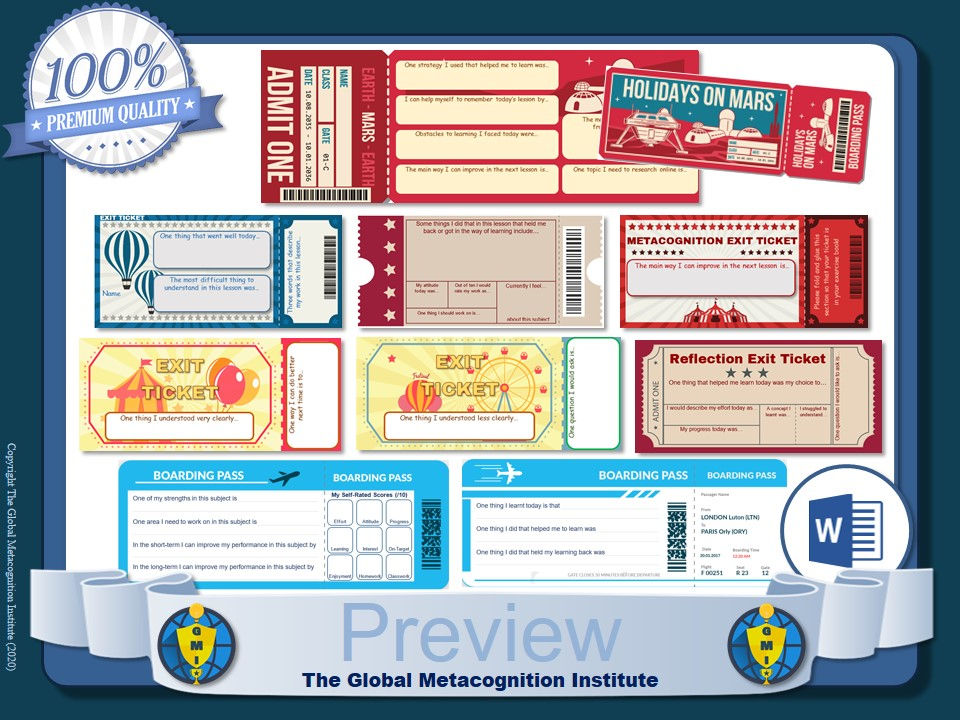Assessment is an essential part of the learning process, helping students and educators track progress, identify strengths and weaknesses, and inform future teaching and learning strategies. Formative assessments, in particular, provide valuable information to help students improve their understanding of concepts, identify areas where they need further practice and feedback, and enhance their overall performance.
Assessment wrappers, also known as metacognitive wrappers or reflective wrappers, are a powerful tool for boosting attainment, metacognition, and self-regulated learning during formative assessments. Assessment wrappers are brief student reflection activities that students undertake before and after formative assessments, designed to encourage metacognitive awareness and self-regulated learning strategies.
The concept of assessment wrappers is rooted in metacognition, which refers to an individual's ability to reflect on their own learning processes, evaluate their strengths and weaknesses, and adjust their strategies accordingly. By completing assessment wrappers, students are encouraged to think more deeply about their learning, consider their approach to the task at hand, and reflect on their progress and understanding.
Before an assessment, students complete a pre-assessment wrapper, which prompts them to reflect on their current understanding of the material, identify areas of strength and weakness, and set goals for the assessment. This process encourages students to take an active role in their learning, assess their own understanding of the material, and set achievable goals for themselves.
After completing the assessment, students then complete a post-assessment wrapper, which encourages them to reflect on their performance, evaluate their progress, and identify areas where they may need further support or practice. This process helps students develop a deeper understanding of the material, build self-awareness and metacognitive skills, and learn to regulate their own learning.
Assessment wrappers are a versatile tool that can be used across a range of subjects and grade levels. They can be easily incorporated into classroom routines and assessments, and can be adapted to meet the needs of individual learners or specific learning goals.
Research has shown that assessment wrappers can have a significant impact on student learning and achievement. Studies have found that students who complete assessment wrappers show greater metacognitive awareness, improved self-regulated learning strategies, and enhanced academic performance. Additionally, assessment wrappers can help reduce test anxiety and increase student engagement and motivation.
We've released two assessment wrapper resources that will help you to implement this metacognitive strategy: printable assessment wrapper worksheets and a 'virtual assessment wrapper'. The printable assessment wrapper worksheets are a great way to make metacognitive work more visible and to track progress when it comes to metacognitive awareness; the virtual lesson wrapper is ideal for teachers who wish to save on printing costs.

Best Practice Guidelines for Using Assessment Wrappers
Here are some tips and tricks for using assessment wrappers with students when doing formative assessment work.
Provide clear instructions: When introducing assessment wrappers to students, it is important to provide clear instructions on how to complete them. This might include a brief overview of what assessment wrappers are, why they are important, and how to fill them out. Providing clear instructions can help students to understand the purpose of assessment wrappers and how they can use them to improve their learning.
Use a variety of formats: Assessment wrappers can take many different forms, including worksheets, online tools, and discussion prompts. Using a variety of formats can help to keep students engaged and interested in the activity. Additionally, using different formats can help to accommodate different learning styles and preferences.
Scaffold the activity: For students who are new to assessment wrappers, it may be helpful to scaffold the activity by providing more guidance and support. This might include providing prompts or questions to help students reflect on their learning, or modelling the process of filling out an assessment wrapper. As students become more familiar with the activity, you can gradually reduce the level of scaffolding.
Incorporate peer feedback: Assessment wrappers can also be used as a tool for peer feedback. After completing an assessment wrapper, students can exchange them with a partner and provide feedback on each other's work. This can help to promote collaborative learning and encourage students to provide constructive feedback to their peers.
Make it a regular activity: To get the most benefit from assessment wrappers, it is important to make them a regular activity in the classroom. This might include incorporating them into the end of every lesson or unit, or using them before and after major assessments. By making assessment wrappers a regular part of the learning process, students can develop the habit of reflecting on their learning and taking ownership of their progress.
Use the data: Finally, it is important to use the data generated by assessment wrappers to inform instruction and provide feedback to students. By analysing the data from assessment wrappers, teachers can identify common areas of weakness and adjust their teaching accordingly. Additionally, teachers can use the data to provide personalized feedback to individual students and help them set goals for improvement.
In conclusion, assessment wrappers are a valuable tool for promoting metacognition and self-regulated learning in students. By providing clear instructions, using a variety of formats, scaffolding the activity, incorporating peer feedback, making it a regular activity, and using the data, teachers can help students to reflect on their learning and improve their academic performance.















































Comments